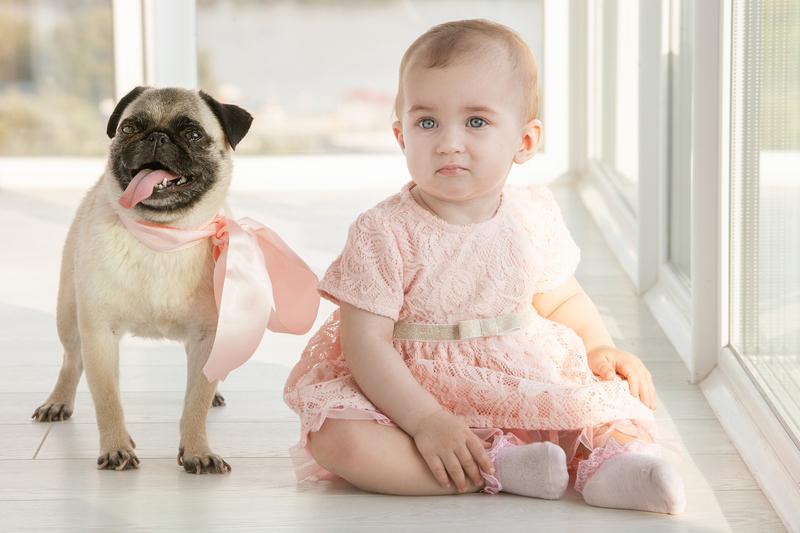Introducing Your Toddler to Pets: 5 Steps to Make Sure It Goes Smoothly

Published Date: 03/11/20
Toddlers and pets can be a winning combination, but you need to introduce your child to animals the right way. There are a few steps that can make the transition easier for both young kids and new pets. Try these tips for the best results.
Start Slow
Both a toddler and a pet are going to need some time to warm up to each other. That's why slow and steady is the best way to start. Have your child around a pet when the animal is on a leash or sitting calmly. Don't force the two to immediately interact. Simply let them both check each other out until they are ready for more contact. It's important for your pet and your toddler to learn how not to spook each other. This takes time, and it won't happen if you don't ease both of them into knowing the other. For example, your child needs to know not to run up to an animal without warning.
Be Gentle
Toddlers love to play, and they can sometimes be rougher than they mean to be. It's important to teach them early to be gentle with pets, even if the child isn't large enough to do the animal any real harm. Teaching your child to be gentle with pets keeps the pet safe. It also helps your child stay safe. An animal that feels threatened due to aggressive behavior is more likely to react negatively. That's why your child should learn to be mindful of their actions when interacting with the animal.
Let a Dog Sniff
Teach your child that a dog sniffs to greet and get to know a person and his environment. A child should let the dog approach and sniff around him until he is ready for more interaction. Your toddler needs to know not to stick his hands or feet in the animal's face while they are doing this.
Preparing your child for the possibility of being sniffed can keep her from panicking or striking out at the animal. This will help both the child and the animal trust each other and learn each other's communication signs early in the relationship. It's also good for your child to refrain from grabbing or hugging an animal on the first visit. Simply let the dog approach and wait for its cues. A toddler's approach can be seen as aggressive to an animal that is already a bit high strung or uncertain of a situation.
Meet Puppies Before Adopting
Pet adoptions are wonderful for families and the pets they take home. To make the adoption experience the best that it can be, make sure that you and your child meet the animals before adopting them. In order to know if you're getting the right pet, transparency is important when adopting puppies and other animals. You don't want to get an animal home only to find out it doesn't do well with children. Meeting a puppy or other animal before the adoption is official gives everyone time to figure out if this is a good fit. Some animal shelters even allow prospective families to foster puppies and cats before they make them a permanent member of the family. This allows everyone to see if relationships click when the animal is actually in his new possible home and has had some time to adjust.
Avoid Interruptions
Teach your child that interrupting a dog that is eating or drinking is not a good idea. Knowing this basic piece of information can help a child avoid aggressive behavior from a pet who is startled.
Make sure to supervise your child when they are with a pet, and show them how to act by setting an example. Teach them how to respect a pet's space and to allow it to finish what it is doing before trying to approach it. A child should also not try to interrupt a fight between a pet and another animal. The child needs to know to stay out of the way and seek help from a parent. Your pet experience will go smoother if you are prepared to train your pet, and you kids to behave correctly.
Kids learn valuable lessons by having a pet. It's just important to introduce young children to animals carefully and with a ton of patience. It will make the relationship better between a child and their pet.
Need help with your children? Click here to find current openings at childcare facilities!
- access_1520's blog
- Log in or register to post comments